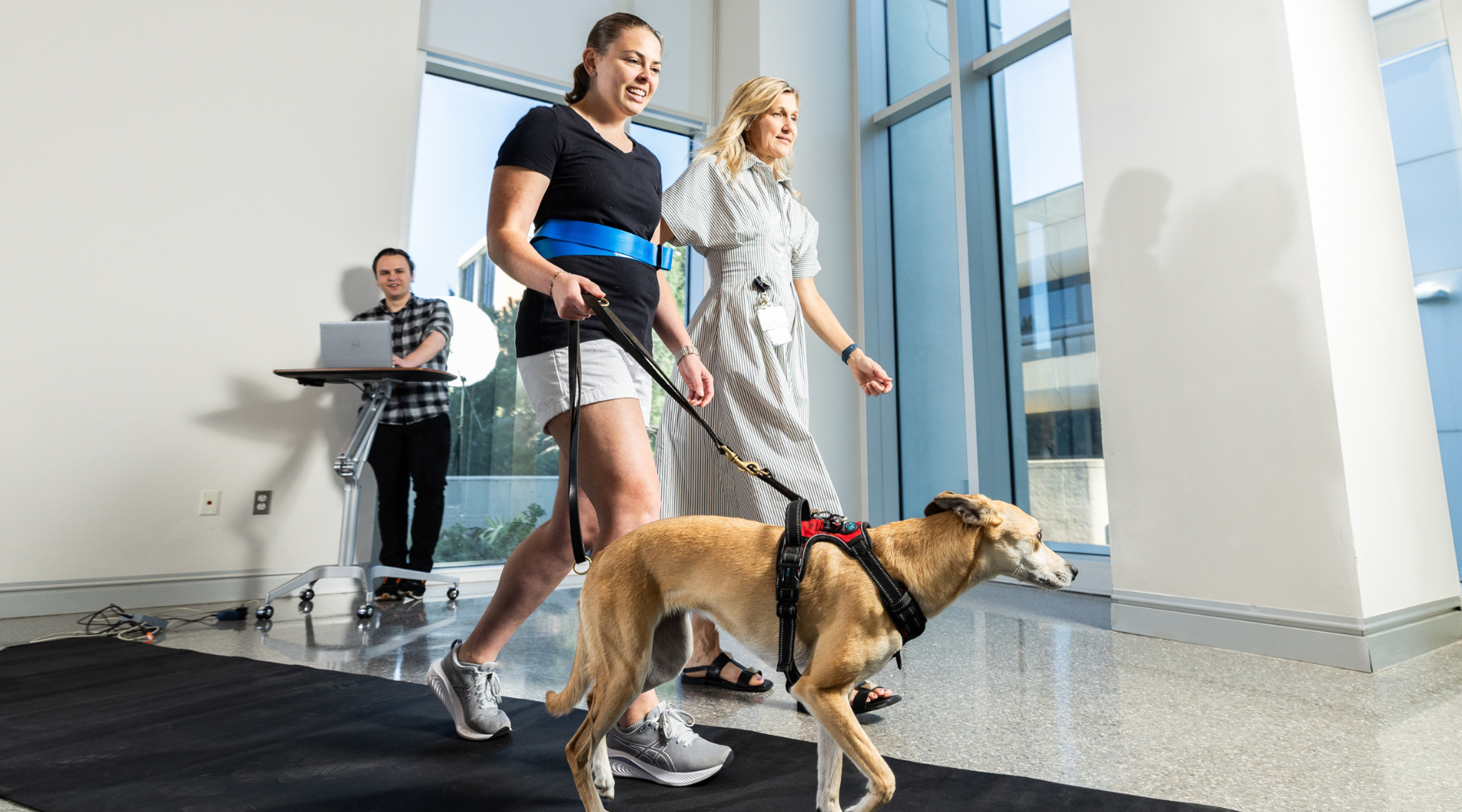OMRF’s Multiple Sclerosis Center investigates whether dogs can help patients with mobility issues
In multiple sclerosis, the body’s immune system mistakenly attacks myelin, a substance that surrounds and protects nerve fibers. With the destruction of myelin comes a host of symptoms, including the loss of mobility.
“One of the main issues that patients with MS have is increased difficulty with walking, ambulation, balance and strength problems,” says Dr. Gabriel Pardo.
Pardo should know. In the course of a career that’s spanned almost four decades, the neuro-ophthalmologist and director of OMRF’s Multiple Sclerosis Center of Excellence has treated tens of thousands of patients with the debilitating disease.
Like just about every other physician who cares for people living with MS, Pardo relies heavily on immune-modifying drugs to manage his patients’ disease. While these powerful biologics, which are typically administered intravenously every few months, have made significant improvements in MS patients’ symptoms, they do not halt the underlying progression of the illness. And, like so many medications, they are expensive and come with side effects.
So, Pardo and his team at OMRF’s MS Center are always searching for ways to help patients that don’t come in the form of a pill or injection. “Yes, we want to develop new science and new treatments,” he says, “but we also want to be mindful of other ways we can improve the quality of life for those with MS.”
Recently, Dr. Bobbette Miller, a physical therapist in the MS Center, had one such idea. You could call it an off-the-leash concept. But, really, it’s more on the leash.
Miller’s research focuses on increasing mobility and safety for MS patients. Previous studies, she says, have consistently demonstrated that the faster people walk, the less likely they are to fall. Miller, a self-described “dog person,” wondered if our four-legged friends could help.

If you have MS and can walk 25 feet, you may qualify for this research trial. All participants will receive partial compensation for their time.
Interested? Contact Bobbette Miller at (715) 581-4415 or bobbette-miller@omrf.org.
For MS patients with ambulation issues, Miller says, “there are physical impairments as well as an element of fear to overcome.” Dogs, she says, “provide motivation and decrease stress in ways that may get people past those challenges.”
To come up with a plan, Miller approached Amanda Mori, who is a graduate student in physical therapy at the University of Oklahoma Health Sciences Center – and, not coincidentally, a fellow canine lover. Together, the pair developed a protocol: Participants will walk on a special mat that records walking cadence, stride length, speed and more, and Miller and Evans can compare their data while walking alone versus holding a leashed dog.
And not just any dog. All participants will walk with Mori’s whippet, Java, once Java has completed classes to become a certified therapy dog, trained not to startle or chase after even the most tempting distractions.
Dr. Rebecca Ludwig hopes to be the first volunteer for the project. Following an MS diagnosis at 14, Ludwig faced challenging relapses that required her to relearn how to walk. Today, she participates in research studies whenever possible.
“Becoming a research participant gives you a sense of purpose, and it’s a really unique way to serve the community,” says Ludwig, who is an occupational therapist. “It’s empowering to make progress.”
Miller envisions this as the first of a series of studies examining whether dogs can assist with the therapeutic process. Her future research plans, which also involve graduate students Ben Bouchard-Miller, Celia Benedict, Autumn Rosenthal and Katty Whitt, include investigating whether the animals can help ameliorate stress, fatigue and other burdens of chronic illness.
“There’s a lot of interest in what dogs can do for people, from service dog tasks to helping calm nightmares,” Miller says. If any of it proves out, there will no doubt be extra treats in Java’s future.
—
Read more from the Summer/Fall 2024 issue of Findings



